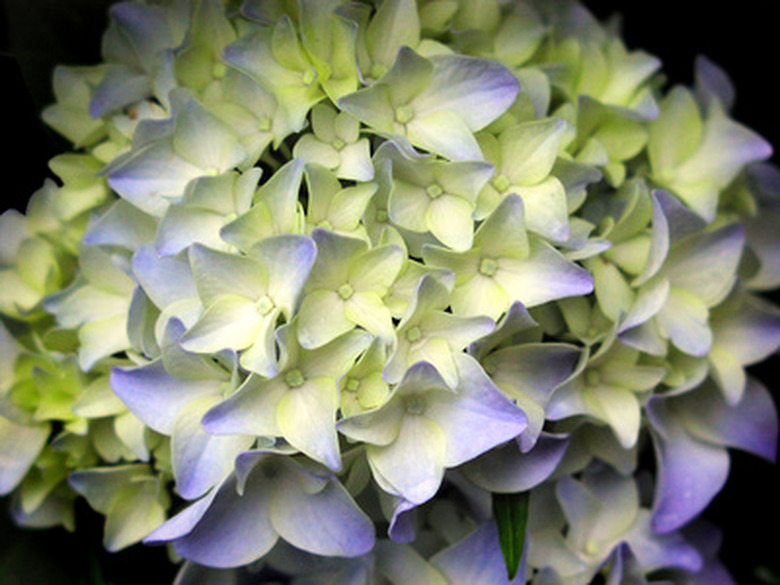How To Cover Hydrangeas In Cold Weather
Hydrangea grows best in areas with mild winters and few days of freezing temperatures. In the event of a freeze or if you are growing your hydrangea in colder climates, the plant must be protected to survive. Hydrangeas form their flower and leaf buds in fall, so freezing temperatures can kill off the buds before they have a chance to flower. This eventually leads to not enough leaves growing in to support the plant and it dies. Protecting the hydrangea during winter helps to ensure the plant is able to bloom each year.
Step 1
Place a 4-inch layer of straw mulch on the ground around the base of the hydrangea in fall before the ground has begun to freeze. Mulching maintains soil temperature throughout winter, protecting the roots of the hydrangea.
- Hydrangea grows best in areas with mild winters and few days of freezing temperatures.
- Mulching maintains soil temperature throughout winter, protecting the roots of the hydrangea.
Step 2
Cut a length of concrete reinforcing mesh that is long enough to completely surround the hydrangea. Warp the mesh around the plant and secure the ends of the mesh together with wire to form a cylinder.
Step 3
Fill the mesh cylinder with straw, peat moss or dead leaves so the hydrangea is completely covered. Replace the straw or leaves throughout winter as they settle, keeping the plant covered at all times.
Step 4
Remove the mesh cylinder and straw in early spring, approximately four weeks before the last expected spring frost. If early spring bulbs are beginning to bloom, such as crocuses and tulips, it is the proper time to remove the mesh cylinder.
Step 5
Cover the hydrangea with a burlap bag if any freezing temperatures are predicted after the mesh is removed. Uncover the hydrangea when temperatures warm back up.
- Cut a length of concrete reinforcing mesh that is long enough to completely surround the hydrangea.
- Fill the mesh cylinder with straw, peat moss or dead leaves so the hydrangea is completely covered.
Tip
In areas that rarely have frost you only need to cover the hydrangea with a burlap bag on the days or nights when frost is predicted, removing it afterward.
Warning
In areas prone to a lot of winter freezing, hydrangea flower buds may not survive even if they are protected, but leave buds likely will so the plant will not die.
Things Needed
- Straw
- Concrete reinforcing mesh
- Wire
- Leaves
- Peat moss
- Burlap bag
